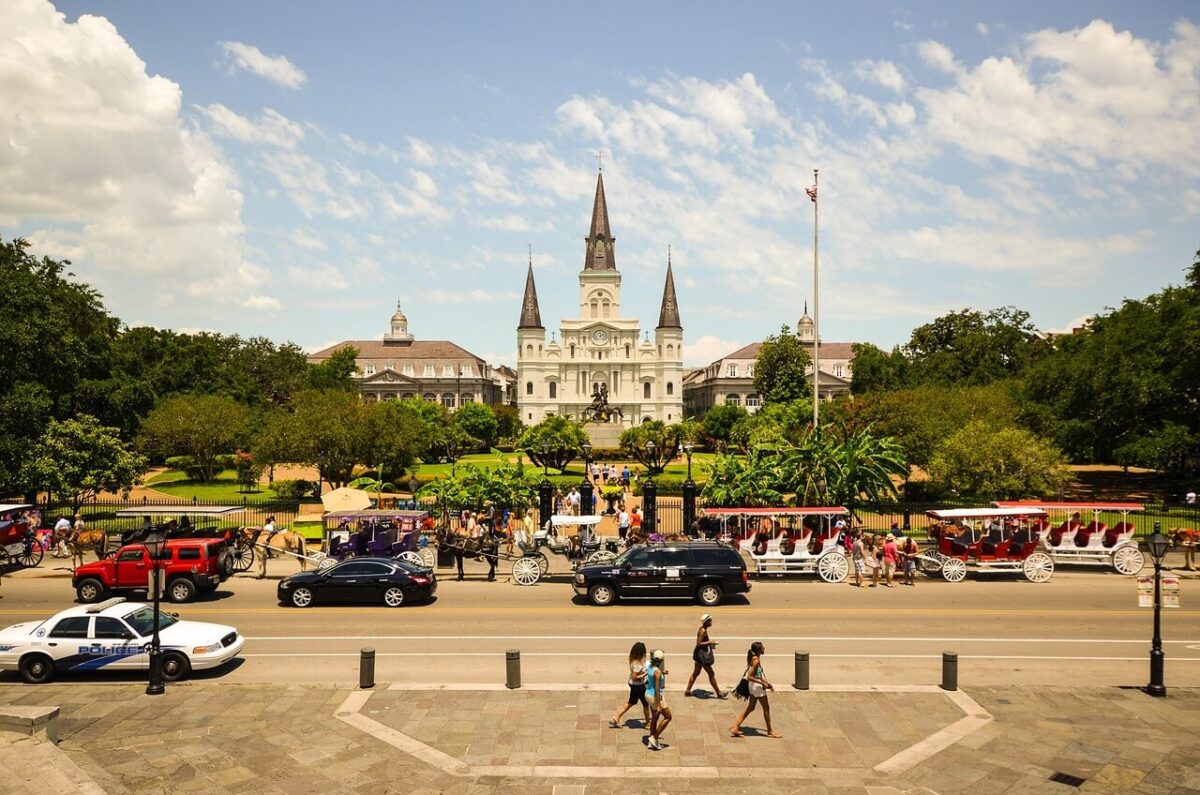“America has only three cities: New York, San Francisco, and New Orleans. Everywhere else is Cleveland.”
I don’t know about Cleveland, but Tennessee Williams was definitely right about New Orleans.
Think of jazz, gumbo, Mardi Gras, bayou, beignet, voodoo, cemeteries, streetcars, French, …
The list could continue. But it doesn’t have to.
You already remember how intriguing New Orleans has ever been since you heard about it for the first time.
It has for me.
So let me invite on a trip that will show you a glimpse into the New Orleans soul.
I believe it will inspire you to want to discover it by yourself.
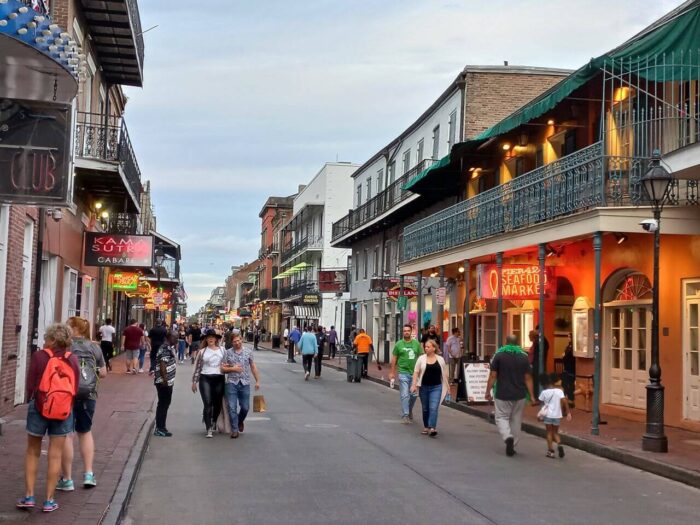
My top 10 places to see in New Orleans
In alphabetical order.
Audubon Park
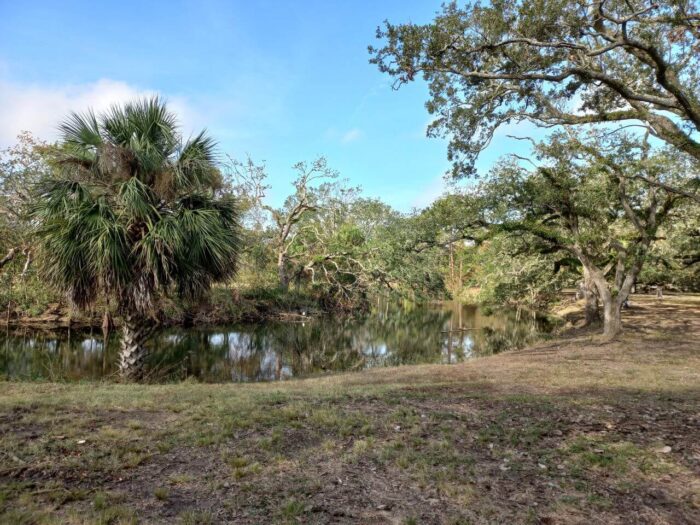
Did you know…?
Why not start with discovering the hidden gem within Audubon Park, its ancient Tree of Life.
This majestic live oak, estimated to be over 500 years old, stands as a silent guardian of history.
It’s a favorite spot for locals, often missed by tourists.
Picture its sprawling branches, like open arms, offering a shaded sanctuary.
It’s not just a tree; it’s a symbol of endurance and beauty.
Imagine the countless stories it could tell, having witnessed centuries of the city’s evolution.
This tree alone makes a visit to Audubon Park a must.
It’s a natural wonder that connects you directly to the timeless spirit of New Orleans.
What is Audubon Park and why see it?
Audubon Park is a lush oasis of natural beauty.
Spanning over 350 acres (142 hectares), it offers a tranquil escape from the city’s hustle.
Its centerpiece, a tranquil lagoon, mirrors the sky and ancient oak trees.
The park boasts the renowned Audubon Zoo, home to exotic wildlife and immersive habitats.
The Audubon Golf Course provides a serene golfing experience amidst stunning landscapes.
Each corner of the park is a celebration of nature, making it a perfect spot for both relaxation and adventure.

How to enjoy Audubon Park?
Audubon Park, a tranquil haven, lies in Uptown New Orleans, easily accessible by the St. Charles Avenue streetcar.
Alight at Audubon Park stop for a short stroll to its gates.
The park opens at dawn and closes at dusk, ideal for daytime exploration.
Remember, it’s a natural space, so respect the wildlife and surroundings.
Relax and soak in the serene atmosphere of this urban retreat.
More information: Audubon Park website
Canal Street (and New Orleans street cars)
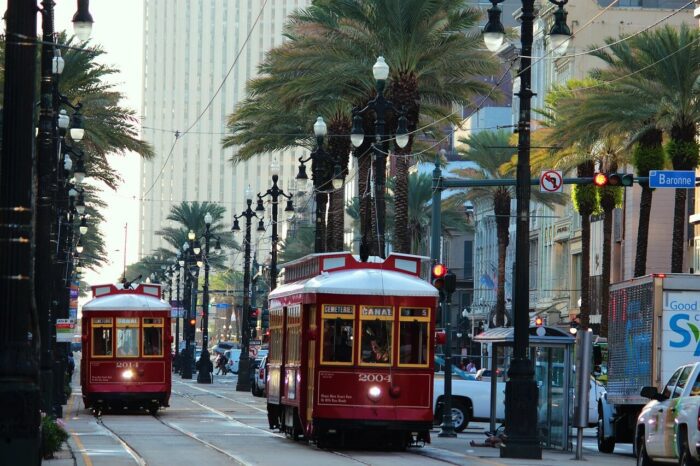
Did you know…?
Canal Street, known for its vibrant streetcars, holds a fascinating, lesser-known story.
It served as a unique cultural boundary.
The street divided the Creole population from the new American settlers.
Each group maintained distinct customs and languages.
The streetcars running along this line symbolized the blend of these diverse cultures.
Today, as you ride these historic streetcars, you’re traversing a line that once represented a meeting point of two different worlds.
This hidden history of Canal Street enriches the experience, offering a glimpse into the complex cultural tapestry that makes New Orleans so captivating.
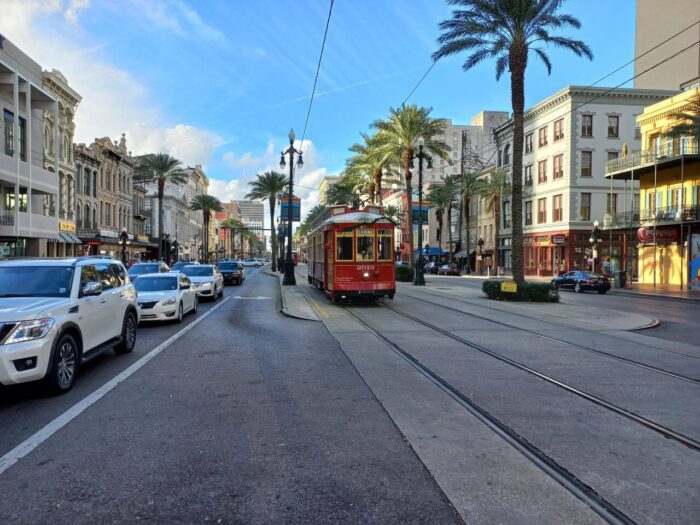
What is Canal Street and why see it?
Canal Street in New Orleans stands as a vibrant artery of the city, famed for its iconic streetcars.
These historic cars, painted in bright red and green, offer a nostalgic ride through the heart of New Orleans.
As they clatter along, they pass notable landmarks such as the Saenger Theatre, known for its grand architecture and Broadway shows.
The street also leads to the bustling French Quarter, a hub of culture and history.
Further along, Canal Street borders the serene City Park, offering a peaceful escape.
This mix of urban energy and historical charm makes Canal Street and its streetcars a must-visit for any traveler.
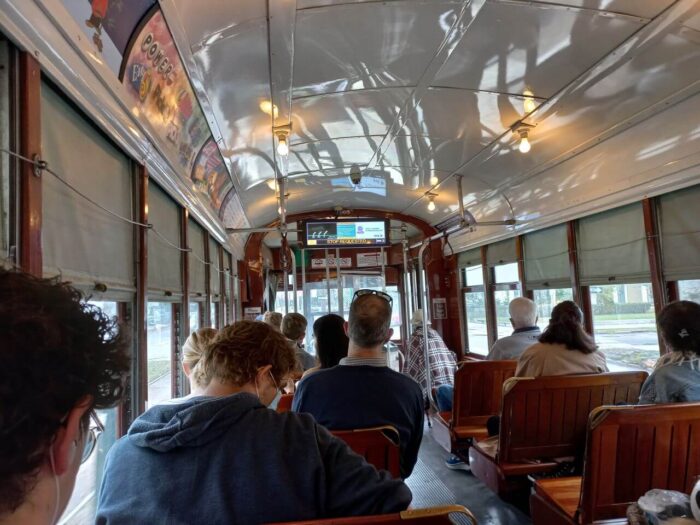
How to enjoy Canal Street and street cars?
Canal Street stretches through the heart of New Orleans, easily reachable by streetcar lines.
For a unique experience, hop on the iconic red or green streetcar.
These lines connect various parts of the city, including the French Quarter and City Park.
Tourists should have exact change for the fare and be mindful of peak hours to avoid crowds.
Remember, these historic streetcars are not just a means of transportation; they’re a journey into the city’s past.
Keep your camera ready to capture the street’s vibrant scenes and historic architecture.
Embrace the rhythm of New Orleans as you glide along Canal Street.
More information: Canal Street website
New Orleans Cemeteries
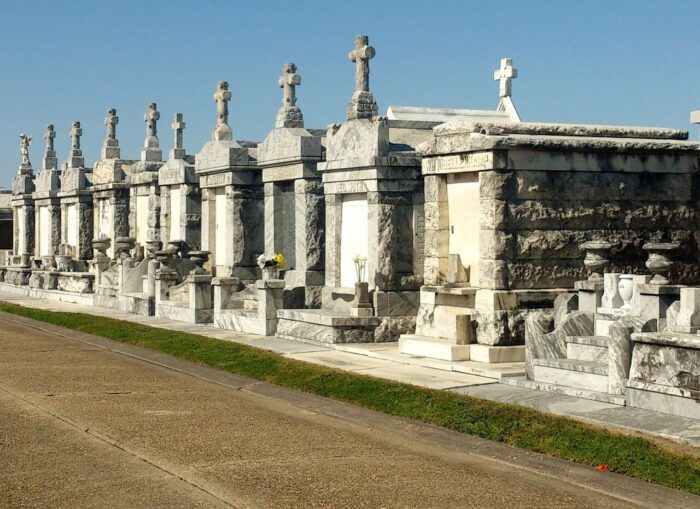
Did you know…?
A captivating fact about New Orleans cemeteries is their unique above-ground burials.
Unlike typical graves, New Orleans’ high water table necessitates these unusual burial practices.
In these “Cities of the Dead,” tombs resemble small houses, creating a village-like atmosphere.
Notably, the same tomb can hold multiple family members.
Over time, the city’s heat decomposes the remains, allowing for the next burial in the same tomb.
This intriguing method, born out of necessity, adds a layer of historical and cultural significance to these resting places, making a visit to these cemeteries a truly unique experience.
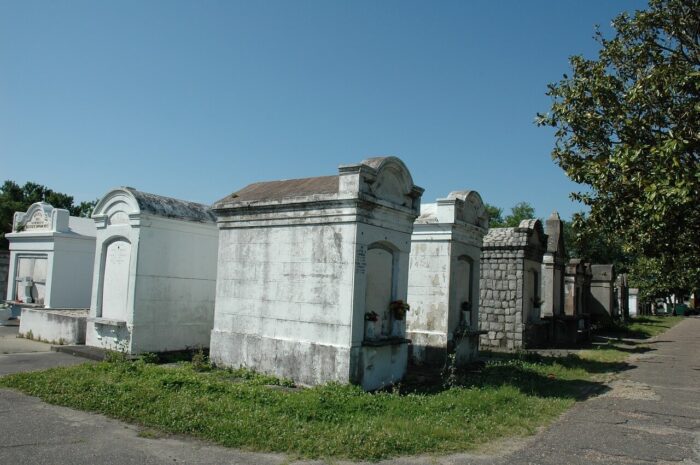
What are New Orleans cemeteries and why see them?
New Orleans cemeteries are renowned for their distinctive, above-ground tombs and haunting beauty.
Known as “Cities of the Dead,” these cemeteries feature elaborate, ornate structures resembling small houses, owing to the city’s high water table.
Notable among them is St. Louis Cemetery No. 1, the final resting place of the legendary Voodoo Queen Marie Laveau, drawing visitors worldwide.
Lafayette Cemetery in the Garden District, surrounded by historic mansions, offers a picturesque and serene atmosphere.
Another key site, Metairie Cemetery, stands out for its elaborate marble tombs and statues, reflecting the city’s rich history.
These cemeteries offer a unique glimpse into New Orleans’ past, making them a must-visit for history enthusiasts and culture seekers alike.
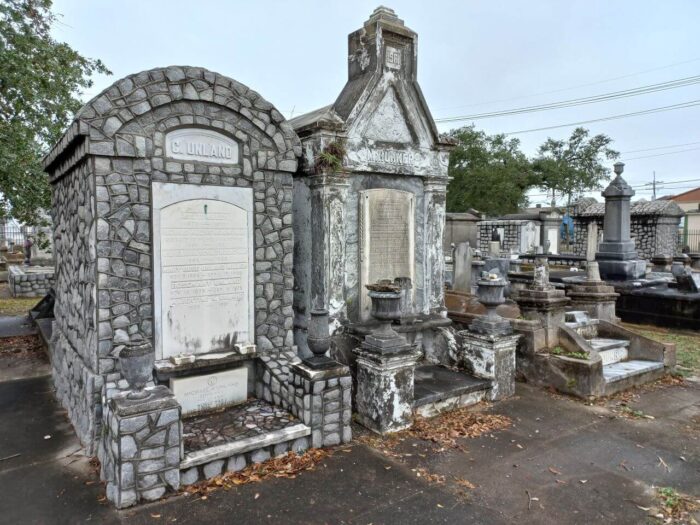
How to enjoy New Orleans cemeteries?
New Orleans’ cemeteries, such as St. Louis Cemetery No. 1 and Lafayette Cemetery, are centrally located and easy to access.
To visit St. Louis Cemetery No. 1, near the French Quarter, you can take a short walk from Bourbon Street.
For Lafayette Cemetery, nestled in the Garden District, hop on the St. Charles Avenue streetcar.
Remember, guided tours are often required for access and provide insightful historical context.
Be respectful of the solemn nature of these sites.
Each visit offers a unique window into the city’s rich history and cultural heritage.
More information: New Orleans cemeteries
City Park
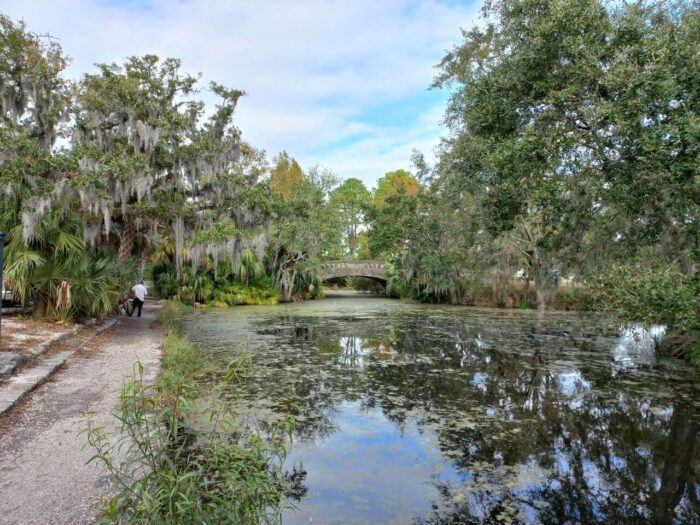
Did you know…?
City Park in New Orleans harbors a surprising secret: it houses one of the largest collections of mature live oaks in the world.
Some of these majestic trees are over 800 years old, making them silent witnesses to centuries of the city’s history.
These ancient oaks, draped in Spanish moss, create a mystical and serene environment, offering a stark contrast to the bustling city nearby.
This hidden treasure within the park adds a layer of historical significance and natural wonder, making a visit to City Park a journey through time amidst the beauty of nature.
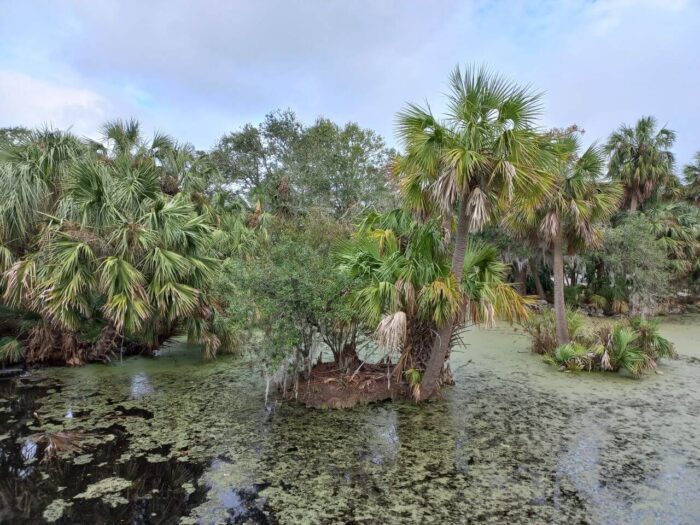
What is City Park and why see it?
City Park in New Orleans is a sprawling 1,300-acre (526-hectare) green oasis, brimming with attractions and natural beauty.
The park’s standout features include the New Orleans Museum of Art and the adjoining Sydney and Walda Besthoff Sculpture Garden, showcasing an impressive array of artworks in a serene outdoor setting.
The Carousel Gardens Amusement Park, a family favorite, offers traditional fairground rides, including a historic, hand-carved carousel.
Nature enthusiasts will revel in the Botanical Garden, home to a vibrant collection of flora.
City Park’s blend of cultural, recreational, and natural attractions makes it a must-visit destination, offering something for every visitor.
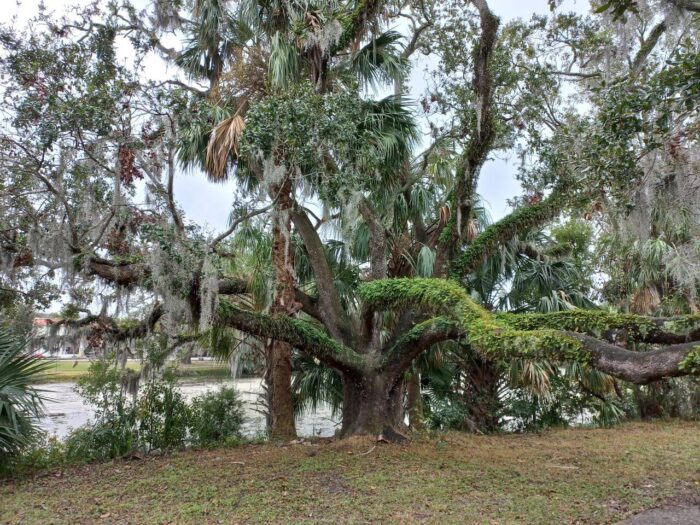
How to enjoy City Park?
City Park is easily accessible by various modes of transport.
You can reach it by taking the Canal Streetcar Line, which stops directly at the park’s entrance.
Remember, the park is vast, so plan your visit to include the main attractions you want to see.
Carrying a map of the park can be helpful.
Also, check the opening times of specific attractions beforehand, as they may vary.
Enjoy the natural beauty and the diverse experiences City Park offers!
More information: City Park website
French Quarter (with Burbon Street and Royal Street)
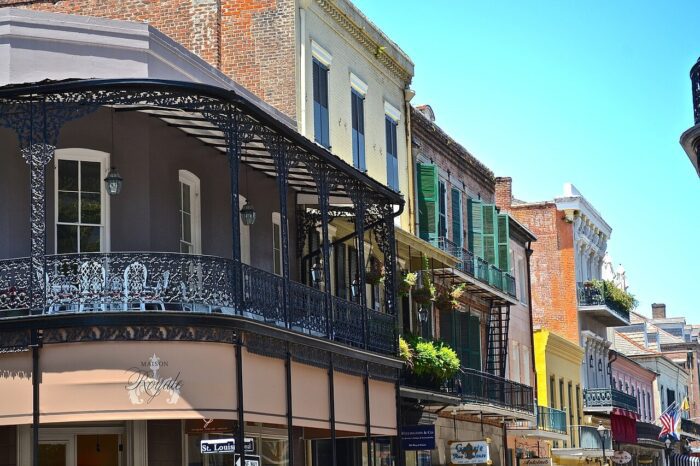
Did you know…?
Within the bustling French Quarter, many overlook the historic significance of Lafitte’s Blacksmith Shop Bar.
This unassuming structure is one of the oldest surviving buildings in New Orleans and is rumored to have been used by the pirate Jean Lafitte as a front for his smuggling operations.
Today, it operates as a bar, retaining its rustic 18th-century charm and an air of mystery.
Its dimly lit, candle-lit ambiance transports visitors back to a time when the French Quarter was a hub of clandestine activities.
This hidden aspect of the bar offers a unique glimpse into the adventurous past of the French Quarter.
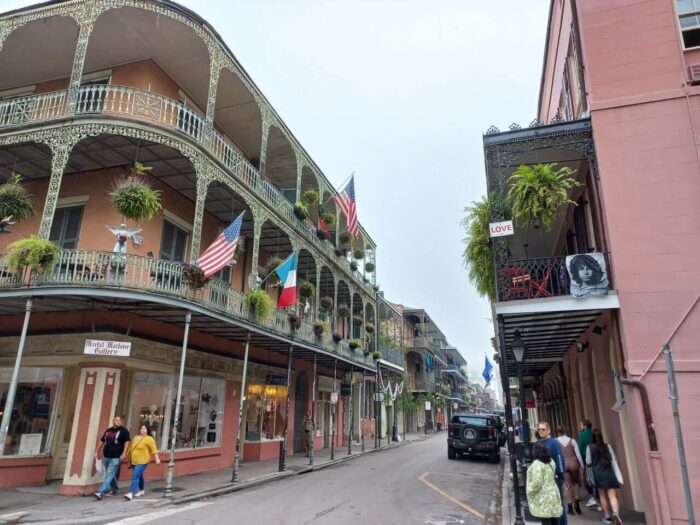
What is French Quarter and why see it?
The French Quarter, the historic heart of New Orleans, is renowned for its vibrant culture and rich history.
Characterized by its stunning Creole architecture, the Quarter’s streets buzz with life.
Bourbon Street offers iconic nightlife with jazz clubs, bars, and lively atmosphere.
Royal Street is a haven for antique lovers, featuring elegant galleries and shops.
At the center of it all, Jackson Square provides a picturesque setting with artists, musicians, and the iconic St. Louis Cathedral.
This blend of lively entertainment, cultural richness, and historical significance makes the French Quarter an essential experience for any visitor to New Orleans.
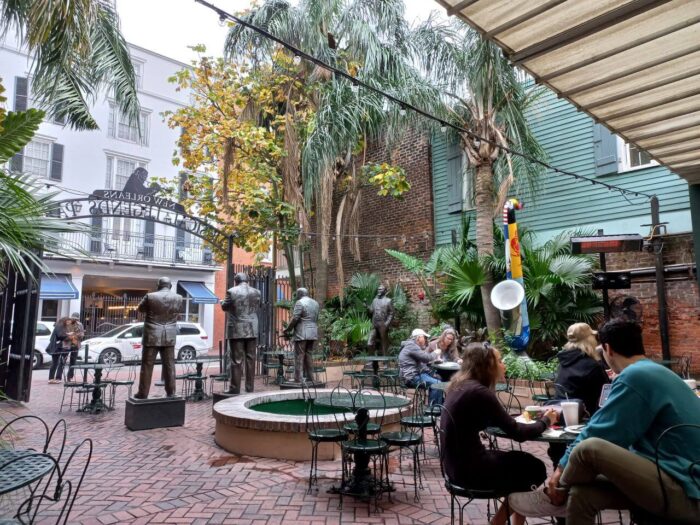
How to enjoy French Quarter?
The French Quarter, nestled in the heart of New Orleans, is easily accessible by various transport modes.
The most scenic way to get there is by the historic streetcars that run along the Riverfront and Canal Street.
For those driving, parking can be challenging, so consider parking outside the Quarter and walking in.
Be mindful of your surroundings, especially at night, and stick to well-populated areas.
Embrace the lively atmosphere, but remember to respect the local residents and their property.
Enjoy the blend of history, culture, and entertainment that the French Quarter offers!
More information: French Quarter website
Garden District
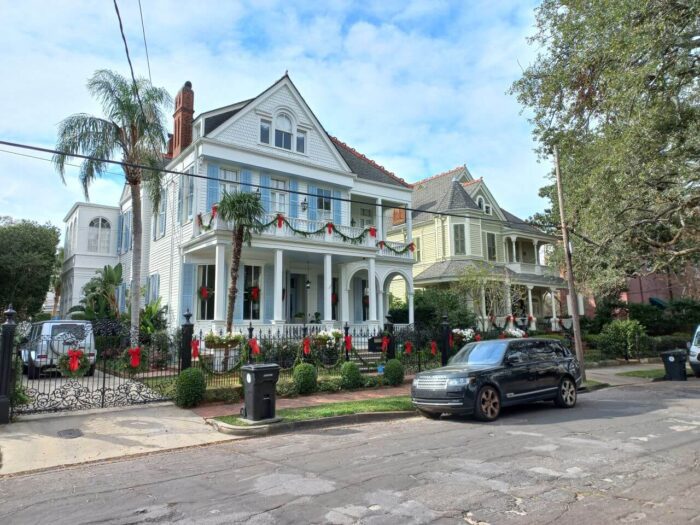
Did you know…?
The Garden District in New Orleans, renowned for its opulent mansions and Southern charm, has a lesser-known feature: it was originally developed for newcomers to the city, separate from the Creole population in the French Quarter.
This historical nuance created a unique architectural blend, differing from the older parts of the city.
The District’s layout, with its larger plots and spacious streets, was a stark contrast to the crowded, lively streets of the Quarter.
This background adds an intriguing layer to the Garden District’s charm, offering visitors not just beauty, but a story of New Orleans’ evolving cultural landscape.
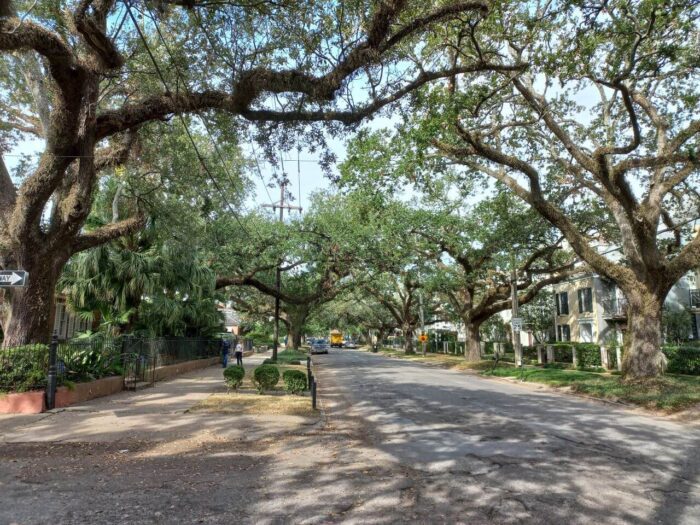
What is Garden District and why see it?
The Garden District in New Orleans, famed for its well-preserved Southern mansions and lush gardens, exudes an air of bygone elegance.
Strolling through its streets offers a visual feast of antebellum architecture, with homes like the iconic Buckner Mansion.
Lafayette Cemetery No. 1, one of the city’s oldest cemeteries, lies at its heart, offering a serene and historic exploration.
Magazine Street, the District’s commercial hub, lines the area with chic boutiques, cozy cafes, and local art galleries.
The contrast of grandiose homes and lively commercial corridors makes the Garden District a captivating blend of history, culture, and local New Orleans flavor.
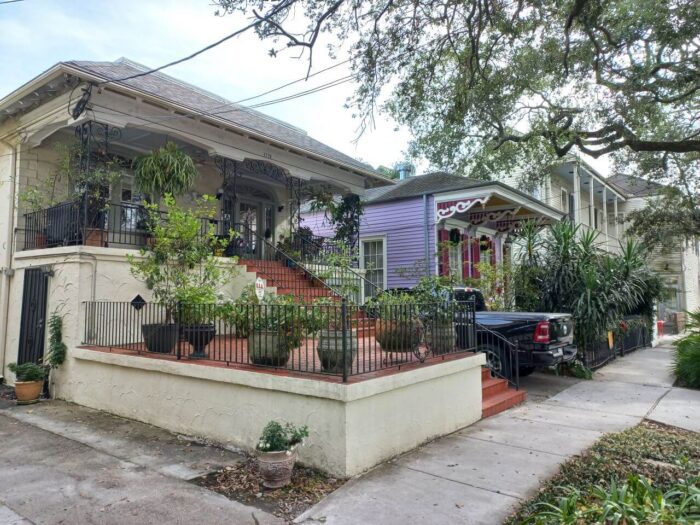
How to enjoy Garden District?
The Garden District is conveniently located in Uptown New Orleans.
To get there, the St. Charles Avenue streetcar is a popular choice, offering a scenic route.
Exiting at stops like Washington, Jackson, or Louisiana avenues places you in the heart of the District.
Be mindful of private property; while the mansions are stunning, they are mostly private homes.
The area is generally safe, but as with any tourist destination, stay aware of your surroundings.
Enjoy the historic charm and serene beauty of the Garden District!
More information: Garden District website
Jackson Square
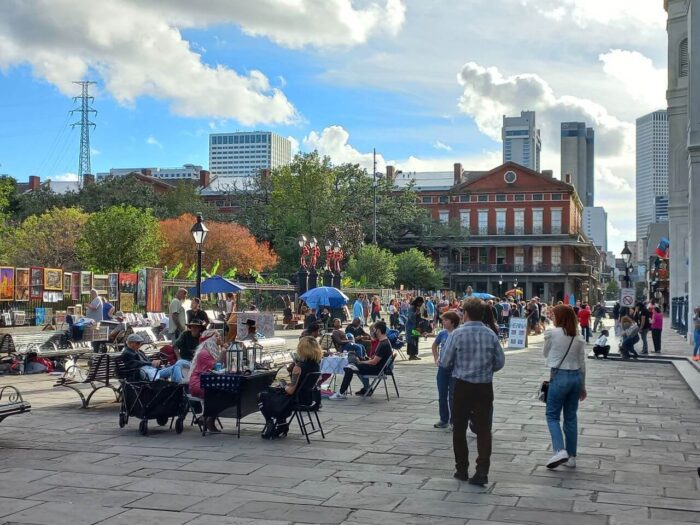
Did you know…?
Jackson Square, a historic park in the heart of New Orleans’ French Quarter, holds a fascinating secret beneath its surface.
Unknown to many, the Square sits atop the original colony’s burial ground.
When the city faced a shortage of space, they converted this cemetery into a public square.
This transformation buried its history, both literally and figuratively.
Today, as visitors enjoy the lively artists, musicians, and the iconic view of St. Louis Cathedral, few realize they’re walking over a piece of New Orleans’ hidden past.
This intriguing layer adds depth to the Square’s vibrant atmosphere, making it a place where history and present-day culture intertwine uniquely.
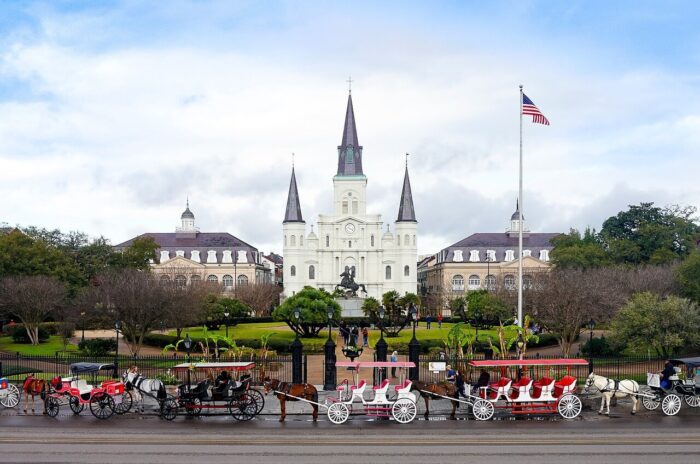
What is Jackson Square and why see it?
Jackson Square, nestled in the heart of New Orleans’ French Quarter, is a historic park brimming with culture and activity.
It’s famous for the striking St. Louis Cathedral, its grand facade a focal point for visitors.
The square is also home to the Cabildo and Presbytère, two significant museums offering deep dives into Louisiana’s rich history.
Artists, musicians, and street performers fill the air with creativity and entertainment, making the square a living gallery of New Orleans culture.
Its blend of historical architecture, vibrant art scenes, and lively street life makes Jackson Square a quintessential experience for anyone visiting the city.
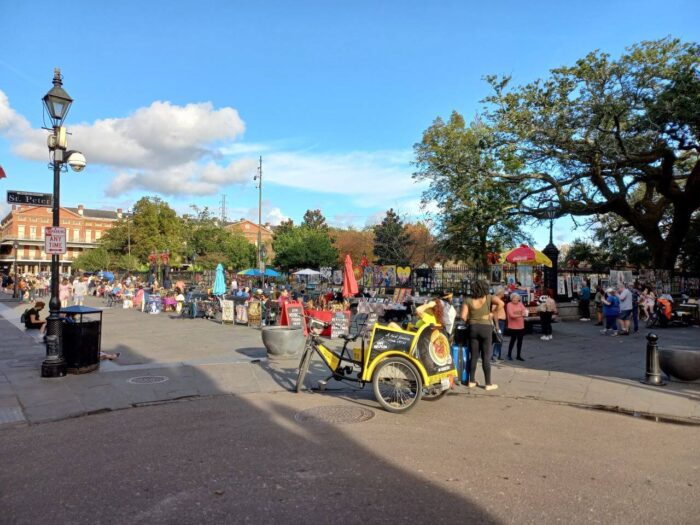
How to enjoy Jackson Square?
Jackson Square is centrally located in the French Quarter of New Orleans, easily reachable on foot from many downtown hotels.
You can also take the iconic streetcars, disembarking at the nearby stops on St. Charles Avenue or Canal Street.
For visitors driving, parking in the French Quarter can be scarce, so consider parking further away and walking or using public transport.
When visiting, be mindful of the artists and performers; showing appreciation for their work is part of the experience.
Enjoy the vibrant atmosphere and historical beauty of this iconic New Orleans landmark.
More information: Jackson Square website
Louis Armstrong Park

Did you know…?
Louis Armstrong Park, a serene spot in New Orleans, harbors a little-known historical treasure: Congo Square.
This area within the park played a crucial role in the development of jazz music.
In the 19th century, enslaved Africans would gather here on Sundays to create music, dance, and maintain their cultural heritage.
These gatherings laid the foundations for what would evolve into jazz, a genre synonymous with New Orleans.
Today, Congo Square stands as a testament to the resilience and creativity of the African American community, making Louis Armstrong Park not just a place of natural beauty, but also a significant cultural and historical landmark.
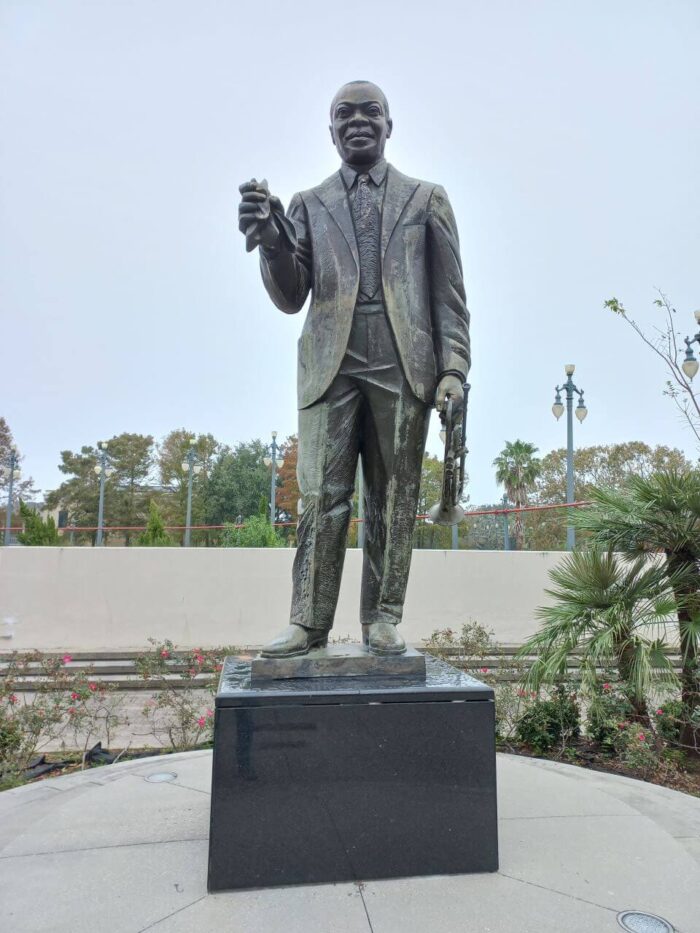
What is Louis Armstrong Park and why see it?
Louis Armstrong Park is a tribute to the city’s rich musical heritage.
This 32-acre (13-hectare) park is special for its deep connections to jazz history, notably through already mentioned Congo Square, a historic site where enslaved Africans gathered to create music.
The park also features a statue of Louis Armstrong, celebrating the jazz legend’s contributions.
The beautifully landscaped grounds, complete with duck ponds and meandering paths, offer a peaceful retreat.
The park’s Perseverance Hall, one of the oldest surviving buildings in the area, adds historical depth.
These attractions make Louis Armstrong Park a meaningful and tranquil haven for music lovers and history buffs alike.

How to enjoy Louis Armstrong Park?
Louis Armstrong Park is situated in the historic Tremé neighborhood, adjacent to the French Quarter in New Orleans.
To get there, visitors can easily walk from the French Quarter or take the Rampart-St. Claude streetcar, getting off at the Dumaine St. stop.
It’s important to check the park’s opening hours, as they can vary.
Visitors should be aware that while the park is a beautiful and culturally rich area, it’s advisable to visit during daylight hours and stay in well-trafficked areas.
More information: Louis Armstrong Park website
Mississippi River Bank

Did you know…?
A captivating fact about the Mississippi River bank in New Orleans is the presence of the historical Algiers Point, directly across the river.
This lesser-known neighborhood, accessible by ferry, offers a unique view of the city’s skyline.
Historically, Algiers Point served as the location for the city’s first dry dock and played a significant role in maritime history.
Today, it’s a quaint, quiet area with colorful homes and a laid-back atmosphere, contrasting the hustle and bustle of the French Quarter.
This aspect of the riverbank not only provides a peaceful retreat but also a glimpse into a different side of New Orleans’ history.
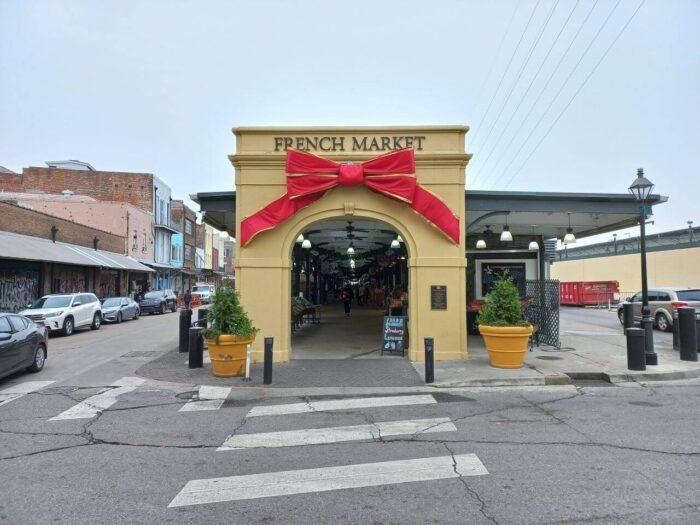
What is Mississipi River Bank and why see it?
The Mississippi River bank in New Orleans is a vibrant and historical waterfront, offering a blend of scenic beauty and cultural experiences.
A key attraction is the Moon Walk, a riverside promenade named after former mayor Moon Landrieu, providing stunning views and a tranquil path along the river’s edge.
The Steamboat Natchez dock, where visitors can embark on a classic riverboat cruise, offers a glimpse into the city’s maritime history.
The French Market, nearby, combines local crafts, food, and music, reflecting the rich diversity of New Orleans.
These attractions, along with the ever-changing river views, make the Mississippi River bank an essential and captivating part of the New Orleans experience.
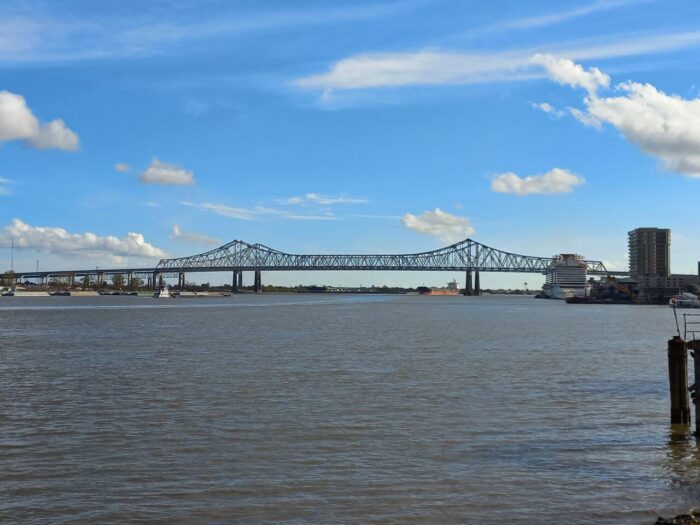
How to enjoy Mississipi River Bank?
The Mississippi River bank in New Orleans stretches along the edge of the historic French Quarter.
To get there, you can easily walk from the heart of the French Quarter or take a streetcar to the nearby stops.
The best way to experience the river is by walking along the Moon Walk promenade.
Be sure to check the schedules for riverboat cruises if interested.
Visitors should be mindful of the weather and dress accordingly, as the area can be quite warm and sunny.
St. Louis Cathedral
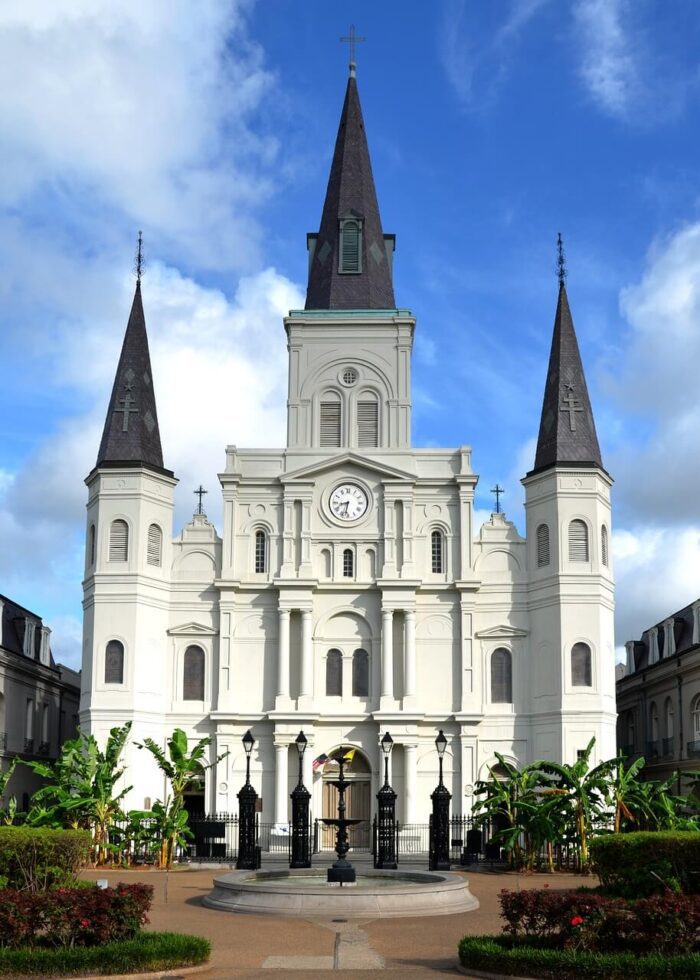
Did you know…?
St. Louis Cathedral, a major landmark in New Orleans, holds a fascinating secret in its storied history.
While known for its stunning architecture, many are unaware that it’s actually the third church built on the site.
The original structure, constructed in 1727, was destroyed in the Great New Orleans Fire of 1788.
The rebuilding efforts led to the magnificent cathedral that stands today.
This resilience and ability to rise from ashes symbolize not just the church’s history but also the enduring spirit of New Orleans itself.
This little-known fact about the cathedral adds a layer of historical depth, making it a must-visit for those interested in the city’s rich past.
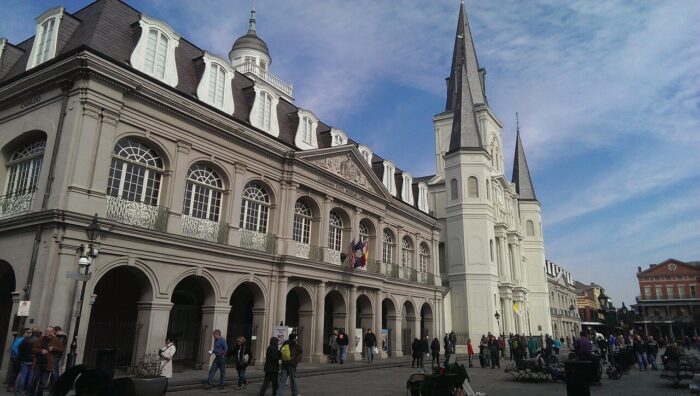
What is St. Louis Cathedral and why see it?
St. Louis Cathedral, standing majestically in the heart of New Orleans’ French Quarter, is one of the city’s most iconic landmarks.
Renowned as the oldest continuously active Roman Catholic Cathedral in the United States.
The cathedral’s striking architecture, with its three steeples and elegant façade, makes it a photographer’s delight.
Inside, visitors find exquisite murals, stained glass, and a tranquil ambiance ideal for reflection.
Key attractions include the serene interior with its historic organ, the beautiful altar, and the peaceful adjoining garden.
The cathedral’s blend of spiritual significance, architectural beauty, and historical depth makes it a must-visit for anyone exploring New Orleans.
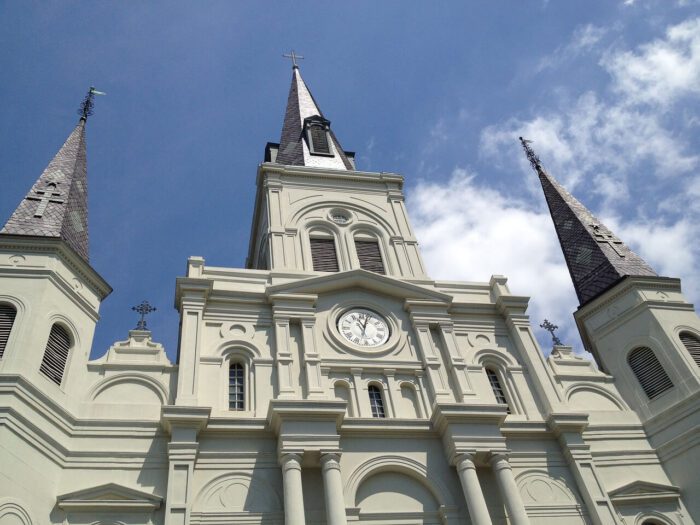
How to enjoy St. Louis Cathedral?
St. Louis Cathedral is centrally located in Jackson Square, in the heart of New Orleans’ French Quarter.
It’s easily accessible on foot from anywhere in the Quarter, or by streetcar, disembarking at the nearby stops on St. Charles Avenue or Canal Street.
Tourists should be aware of the cathedral’s operating hours, especially if they wish to attend a mass or require a guided tour.
Photography is generally allowed, but it’s important to be respectful, especially during services.
More information: St. Louis Cathedral website
Conclusion
As our journey through the soul of New Orleans concludes, we’re left with vivid images of the city’s unique charm and rich tapestry.
From the lively jazz echoing through the historic streets of the French Quarter to the tranquil beauty of Audubon Park, New Orleans beckons with a blend of culture, history, and enchantment.
The hidden stories of its landmarks, like the mysterious past of Jackson Square and the architectural wonders of St. Louis Cathedral, invite us to explore deeper.
This city isn’t just a destination; it’s an experience, steeped in a vibrant spirit that stays with you long after your visit.
New Orleans awaits to tell its tales and share its soulful melody with all who wander its storied streets.
Happy travel
Marcin
My top places to see in New Orleans
- Audubon Park
- Canal Street and street cars
- New Orleans Cemeteries
- City Park
- French Quarter (with Bourbon Street and Royal Street)
- Garden District
- Jackson Square
- Louis Armstrong Park
- Mississipi River Bank
- St. Louis Cathedral
Useful links
New Orleans public transport website
Looking for more inspiration for places to visit?
The Best Of Europe: Top 10 Iconic Cities To Visit
The Best Of North America: Your Ultimate Guide To 10 Most Vibrant Cities

